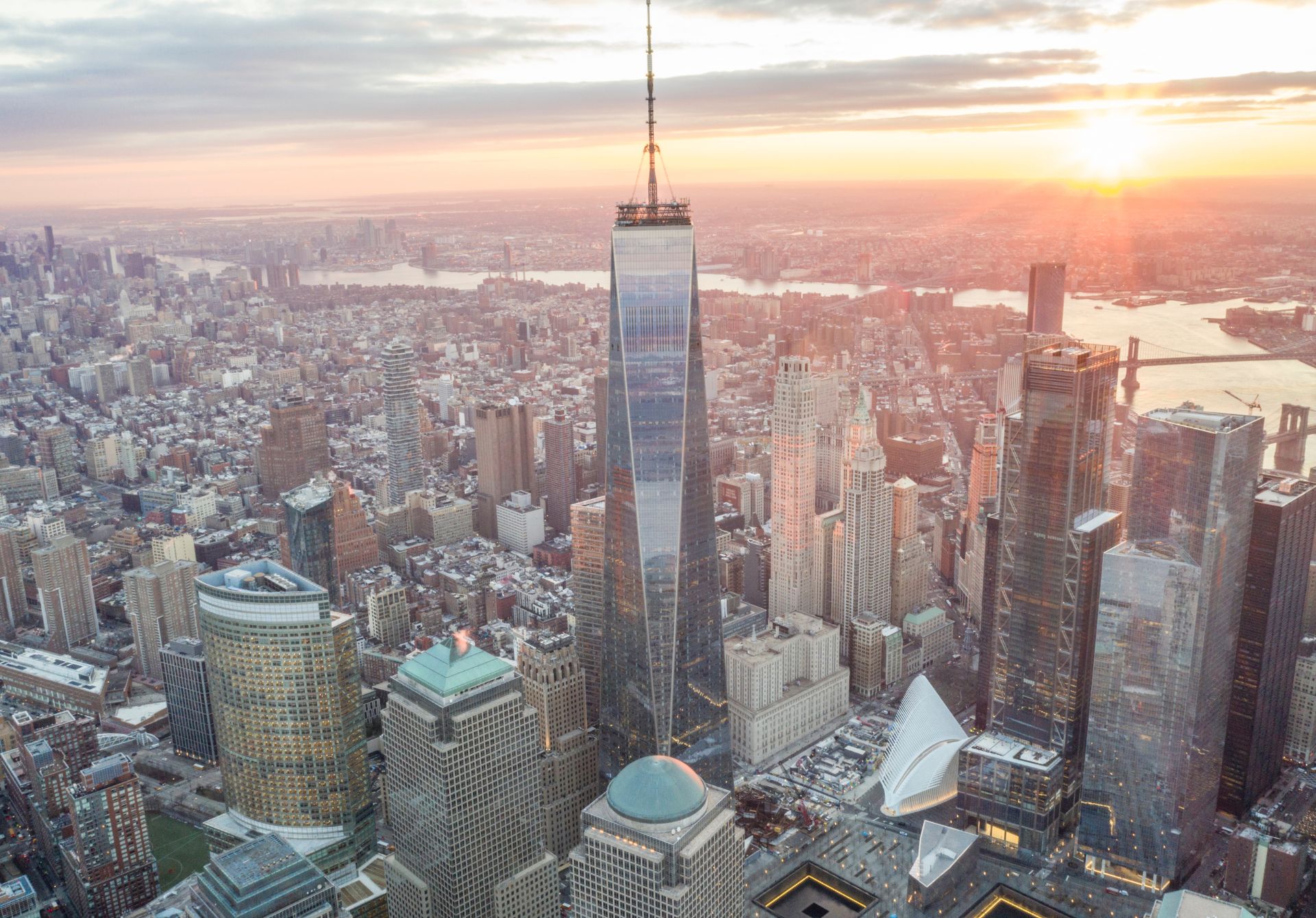Rising from the ashes of tragedy, One World Trade Center stands as a testament to American resilience, architectural innovation, and the undying spirit of New York City. This magnificent structure, often referred to as the “Freedom Tower” during its early planning stages, has become an iconic symbol of hope and renewal in Lower Manhattan.
Architectural Marvel
Designed by architect David Childs of Skidmore, Owings & Merrill, One World Trade Center reaches a symbolic height of 1,776 feet (541.3 meters), commemorating the year of American independence. The building’s geometric design features eight isosceles triangles forming a perfect octagon at its center, which gradually transforms into a square at the base and crown. This unique architecture creates a crystalline form that captures and reflects light, making the tower a constantly changing presence in the New York skyline.
Engineering Excellence
The structure incorporates unprecedented safety and security features. Built with a reinforced concrete core and steel-frame structure, the tower includes multiple redundant systems for emergency power and ventilation. The concrete used in construction is among the strongest ever developed for commercial use, capable of withstanding pressures of up to 14,000 pounds per square inch. The building’s base, rising 186 feet above street level, is built with a specialized glass and steel facade designed to withstand extreme forces.
Sustainability Leadership
One World Trade Center achieved LEED Gold certification, demonstrating its commitment to environmental sustainability. The building employs numerous green technologies, including: • Rainwater collection systems that reuse water for cooling and irrigation • LED lighting throughout the structure • Steam-to-electricity turbines generating clean power • High-performance glass to maximize natural light while minimizing heat gain These features reduce the building’s energy consumption by an estimated 30% compared to typical office towers.
Economic Impact
As the centerpiece of the rebuilt World Trade Center complex, One WTC has played a crucial role in revitalizing Lower Manhattan’s economy. The tower provides 3 million square feet of commercial space, housing numerous prestigious companies including Condé Nast, which occupies 25 floors as the anchor tenant. The building’s observation deck, One World Observatory, attracts over 2 million visitors annually, contributing significantly to local tourism revenue.
Cultural Significance
Beyond its physical presence, One World Trade Center holds profound cultural significance. The building serves as a symbol of New York’s resilience and renewal following the events of September 11, 2001. Its observation deck offers visitors not just spectacular views but also an educational journey through New York’s history and the story of the tower’s construction. The building’s spire is illuminated in different colors throughout the year to commemorate various causes and celebrations, making it a living part of the city’s cultural fabric.
One World Trade Center represents far more than just a skyscraper. It stands as a masterpiece of modern architecture and engineering, a beacon of sustainability, and a powerful symbol of American resilience. As it approaches its first decade of operation, the tower continues to evolve as a vital hub of commercial activity and a must-visit destination for tourists from around the world. Most importantly, it serves as a daily reminder of humanity’s ability to recover, rebuild, and thrive in the face of adversity, making it truly worthy of its status as America’s tallest building and a global architectural icon.
